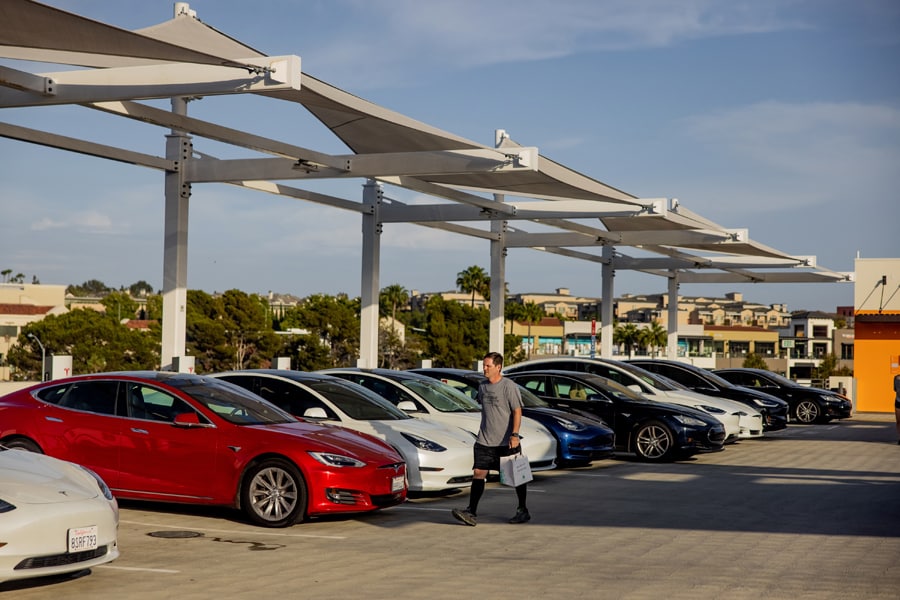
Why Tesla soared as other automakers struggled to make cars
Tesla racked up record sales quarter after quarter and ended the year having sold nearly twice as many vehicles as it did in 2020, unhindered by an industrywide crisis
 Tesla cars at a charging in San Diego, July 21, 2021. Tesla racked up record sales quarter after quarter and ended the year having sold nearly twice as many vehicles as it did in 2020 unhindered by an industrywide crisis. (Roger Kisby/The New York Times)
Tesla cars at a charging in San Diego, July 21, 2021. Tesla racked up record sales quarter after quarter and ended the year having sold nearly twice as many vehicles as it did in 2020 unhindered by an industrywide crisis. (Roger Kisby/The New York Times)
For much of last year, established automakers like General Motors and Ford Motor Co. operated in a different reality from Tesla, the electric car company.
GM and Ford closed one factory after another — sometimes for months on end — because of a shortage of computer chips, leaving dealer lots bare and sending car prices zooming. Yet Tesla racked up record sales quarter after quarter and ended the year having sold nearly twice as many vehicles as it did in 2020, unhindered by an industrywide crisis.
Tesla’s ability to conjure up critical components has a greater significance than one year’s car sales. It suggests that the company, and possibly other young electric car businesses, could threaten the dominance of giants like Volkswagen and GM sooner and more forcefully than most industry executives and policymakers realize. That would help the effort to reduce the emissions that are causing climate change by displacing more gasoline-powered cars sooner. But it could hurt the millions of workers, thousands of suppliers and numerous local and national governments that rely on traditional auto production for jobs, business and tax revenue.
Tesla and its enigmatic CEO, Elon Musk, have said little about how the carmaker ran circles around the rest of the auto industry. Now it’s becoming clear that the company simply had a superior command of technology and its own supply chain. Tesla appeared to better forecast demand than businesses that produce many more cars than it does. Other automakers were surprised by how quickly the car market recovered from a steep drop early in the pandemic and had simply not ordered enough chips and parts fast enough.
When Tesla couldn’t get the chips it had counted on, it took the ones that were available and rewrote the software that operated them to suit its needs. Larger auto companies couldn’t do that because they relied on outside suppliers for much of their software and computing expertise. In many cases, automakers also relied on these suppliers to deal with chip manufacturers. When the crisis hit, the automakers lacked bargaining clout.
©2019 New York Times News Service






